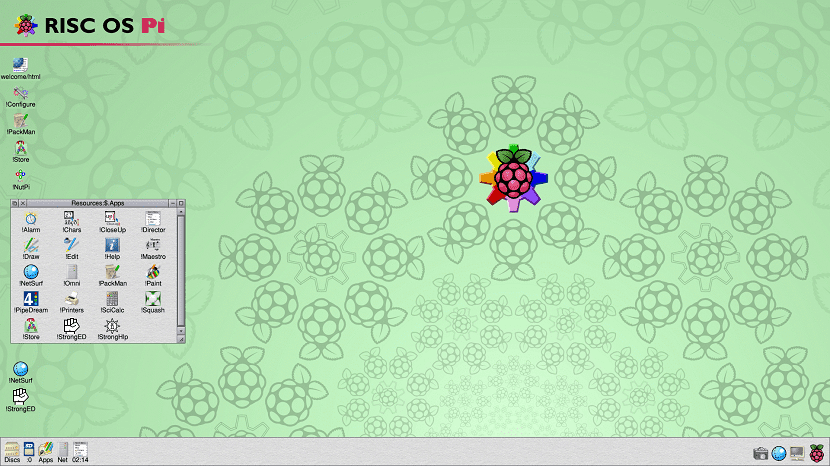
RISC OS is an operating system originally designed by Acorn Computers Ltd in Cambridge, England. First released in 1987, was specifically designed to run on the ARM chipset, which Acorn had simultaneously designed for use in his new line of Archimedean personal computers.
The RISC operating system takes its name from the supported RISC (reduced instruction set computing) architecture.
Most recent stable versions run on the ARMv3 / ARMv4 RISC PC, the ARMv5 Iyonix, as well as processors, ARMv7, Cortex-A8, Cortex-A9 (like the one used in the PandaBoard).
SCRATCHS It is a very light system, a complete installation takes less than 4 Mb. It can be installed in Flash memory (next to u-boot) for a very fast start.
The system is quite simplistic: cooperative multitasking, little memory protection.
A bit about RISC OS
The operating system is single user. Although most of today's multi-threaded preventive use (PMT) and multithreaded desktop operating systems, RISC OS sticks with a CMT system.
The kernel of the operating system is stored in ROM, providing fast boot time and security against operating system corruption.
The system provides many ways in which the programmer can intercept and modify its operation. This simplifies the task of modifying its behavior, whether in the GUI or deeper.
File System
The file system eIt is volume-oriented: The top level of the file hierarchy is a volume (disk, network share) prefixed with the file system type.
To determine the file type, the operating system uses metadata instead of file extensions.
The colon is used to separate the file system from the rest of the path; the root is represented by $ () and the directories are separated by a full stop (.).
External file system extensions are shown by a slash (example.txt is converted to example / txt).
Esto allows transparent handling of files and similar files, They appear as directories with some special properties. The files within the image file appear in the hierarchy below the main file.

File formats
The operating system uses metadata to distinguish file formats. The MimeMap module maps some common file types from other systems to file types.
Desktop
The WIMP interface is based on a stacking window manager and incorporates three mouse buttons (named Select, Menu, and Adjust), context-sensitive menus, window order control (that is, push back), and dynamic window focus (a window can have input focus at any position in the stack).
The icon bar (Dock) contains icons representing mounted disk drives, RAM disks, running applications, system utilities, and docks: inactive files, directories, or applications. These icons have context menus and support drag and drop.
Applications
The RISC operating system ships with a number of desktop applications as pre-installed software.
Finally, the RISC operating system comes with a version of BBC BASIC, which allows you to start programming with a simple access language.
How to get Risc OS?
Almost every year since 1987, at least one new RISC OS compatible machine has appeared. The most popular today are the Raspberry Pi 3, BeagleBoard, and Pandora.
Some manufacturers offer dedicated computers, which allows for a faster machine thanks, for example, to the use of SATA to connect an SSD (faster than an SD card).
Finally, eThis system as such for productive environments or daily tasks is not functional.
However, it is very useful for those who are studying programming and the system serves perfectly as a reference to tend the structure and functions of an operating system.
In order to get this system on your Raspberry Pi, NOOBS makes it easy to install and boot the RISC operating system.